It’s Time to Level the Post-Secondary Playing Field: Six Principles for Building a Career Pathways Program
CompetencyWorks Blog
I had such a transformative experience as a teacher in a career pathways program that it ended up shaping the trajectory of my entire career. I saw firsthand what a powerful experience it is for students, and in partnering with community leaders, I felt a stronger sense of efficacy than I had in years as a classroom teacher. After a few years, I also realized that students who participated in these programs were leaving with a serious edge. Not only did they have a stronger sense of what they wanted for their futures, but they were also leaving with career-ready skills and an established network. Yet, as I got further into this work, while I celebrated these successes, I also began to have a nagging worry about all those other kids out there who weren’t getting such opportunities.
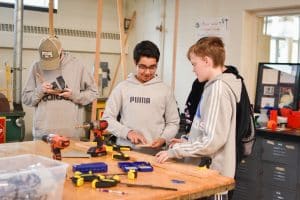
The goal of sharing these principles is to encourage all districts to build a career pathways program, which is a natural fit for shifting to competency-based education (CBE). The very nature of CBE, with its focus on applicability, relevance, and student agency, mirrors the goals of strong career pathway programs. Many school districts have started this work, and it’s our role as a collective educational system to ensure that all students can access these experiences, or we run the risk of perpetuating a serious opportunity gap.
All students deserve the opportunity to access career experiences at the secondary level through a competency-based approach. This ensures they not only have the academic skills to do the jobs of their futures but also the career skills to get the interview in the first place. Career pathways programming has the potential to enhance equity across the board, but if we are not careful, these programs could create even more disparities within our educational system. Every district should heed this call to action.
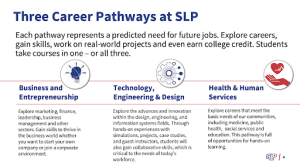 Principle 1: Student agency is key in a career pathways program.
Principle 1: Student agency is key in a career pathways program.
Any teacher who is committed to building student agency will be helpful in building your career pathways program. Teachers who do this well provide intentional instruction to build student self-direction, collaboration, and other career competencies. These teachers provide frequent feedback on how students are doing with career and life competencies along the way, and they provide processes for students to also get feedback from industry partners. Most importantly, teachers can embed these career competencies with their academic competencies, interweaving student agency as a part of everyday practice.
Principle 2: Strong pedagogy and backward design is still imperative.
Backward design is more important than ever in a career pathways program. It ensures academic rigor, strong interdisciplinary connections, and relevant performance assessments to support the learning and demonstration of competencies. The most skilled educators will use a backward design to co-create learning experiences with their students in which the teacher’s role is facilitator. By using Wiggins & McTighe’s Understanding by Design (2011) approach for curricular design, there is alignment and clarity throughout the learning experiences. Teachers utilize both academic and career competencies to frame desired results and co-create assessments and learning pathways with students for amplified voice and choice.
Principle 3: Tap into your community for authentic audiences with projects that matter.
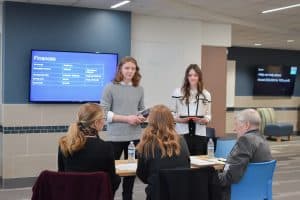
The richest projects are those within your own community. These projects increase the relevance and meaning of the work and create connections for students that go beyond the walls of their schools. Community projects with embedded performance assessments align naturally with CBE because they are designed for an elevated depth of knowledge. As an educator, you are forging a community of practice that is inclusive of industry and education, developing a wider swath of support around your students. You are also creating experiences for students to feel more connected to their community.
Principle 4: Avoid false choices between career and college experiences.
Instead of an either/or mentality in focusing on a career or college, look at how you can flexibly use time and human capacity in your system to bring together elective and core courses. Consider combining business with language arts for a fresh twist on entrepreneurship or science with social studies for a global perspective on the environment. Consider embedding college credit into core courses in your pathways program or offer career opportunities that come with certifications and college credit, such as nursing or emergency medicine programs. This simply opens up more opportunities for students and challenges the assumption and mindsets that one has to choose a career OR college as their next step.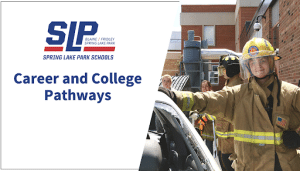
Principle 5: Bring along all stakeholders on the journey.
Engage families, community partners, school board members, school counselors, local colleges, students, and of course, teachers, as you design your program. Each of these stakeholders will have a different perspective to bring to the design, and it’s also important that all of them can speak to the vision for your program. Once your program launches, use stories to bring the program to life as you keep all stakeholders engaged and share your successes.
Principle 6: Develop a strong evaluation plan to see if your program is making a difference.
As with the development of any new program, it’s our responsibility to make sure it’s doing what we say it’s doing for student learning and life experiences. Determine up front how you will assess your program’s success. Ask the hard questions along the way: Who does the program serve? Who is it not serving? What impact is it actually having on students’ post-secondary decisions? On their student agency? As you learn from your results, refine, refine, and refine.

No matter your district’s size, available resources, or competing demands, creating a career pathways program should be your priority if you don’t already have one. CBE and career pathways are natural partners to one another. Together they help inform your portrait of a graduate and see if your portrait dreams are coming to fruition. And if you already have a career pathways program, I hope these principles will either reinforce your good work or give you ideas for where to go next. At the secondary level, especially, career pathways are the epitome of personalized learning. Every child in our country deserves the opportunity to get a head start on their dreams and goals.
Learn More
- The Power of Work-Based Learning in Competency-Based Education
- Best Practices for High-Quality Work-Based Learning
- The X3 Internship Program Models a Vision for Work-Based Learning
- Expanding Student Access to Work-Based Learning: Federal Policy Recommendations
- Career and College Pathways at Spring Lake Park High School
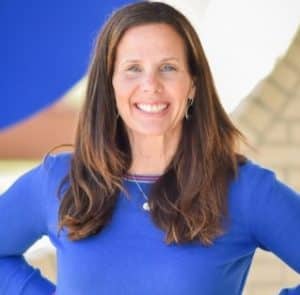
Melissa Olson, Ed.D., is the Director of Curriculum & Instructional Practices for Spring Lake Park (SLP) Schools in Minnesota. Prior to her current position, she coordinated career pathways programming at both SLP and a previous school district. She believes deeply in the power of career pathways and has worked with over a dozen schools across the nation to help them build programs.